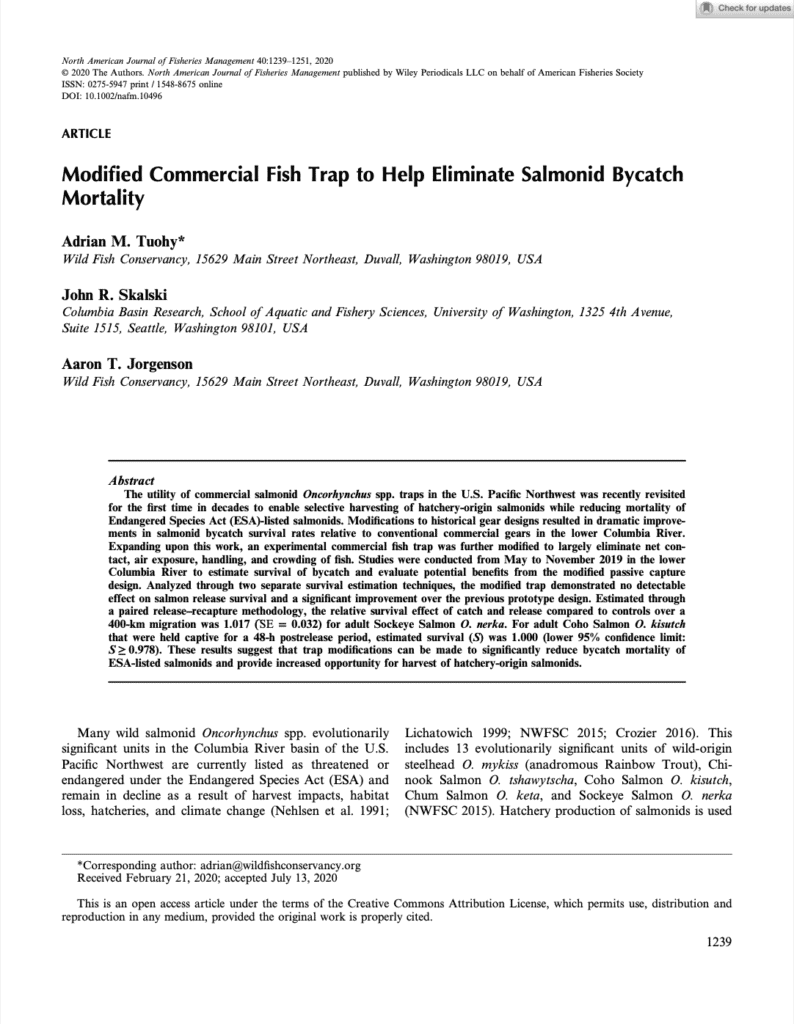
Description |
|---|
A paper by Wild Fish Conservancy’s Adrian Tuohy, Aaron Jorgenson, and Dr. John Skalski. The utility of commercial salmonid Oncorhynchus spp. traps in the U.S. Pacific Northwest was recently revisited for the first time in decades to enable selective harvesting of hatchery-origin salmonids while reducing mortality of Endangered Species Act (ESA)-listed salmonids. Modifications to historical gear designs resulted in dramatic improvements in salmonid bycatch survival rates relative to conventional commercial gears in the lower Columbia River. Expanding upon this work, an experimental commercial fish trap was further modified to largely eliminate net con- tact, air exposure, handling, and crowding of fish. Studies were conducted from May to November 2019 in the lower Columbia River to estimate survival of bycatch and evaluate potential benefits from the modified passive capture design. Analyzed through two separate survival estimation techniques, the modified trap demonstrated no detectable effect on salmon release survival and a significant improvement over the previous prototype design. Estimated through a paired release–recapture methodology, the relative survival effect of catch and release compared to controls over a 400-km migration was 1.017 (bSE = 0.032) for adult Sockeye Salmon O. nerka. For adult Coho Salmon O. kisutch that were held captive for a 48-h postrelease period, estimated survival (S) was 1.000 (lower 95% confidence limit: S≥0.978). These results suggest that trap modifications can be made to significantly reduce bycatch mortality of ESA-listed salmonids and provide increased opportunity for harvest of hatchery-origin salmonids. |
File Attachment |
|---|
Download |